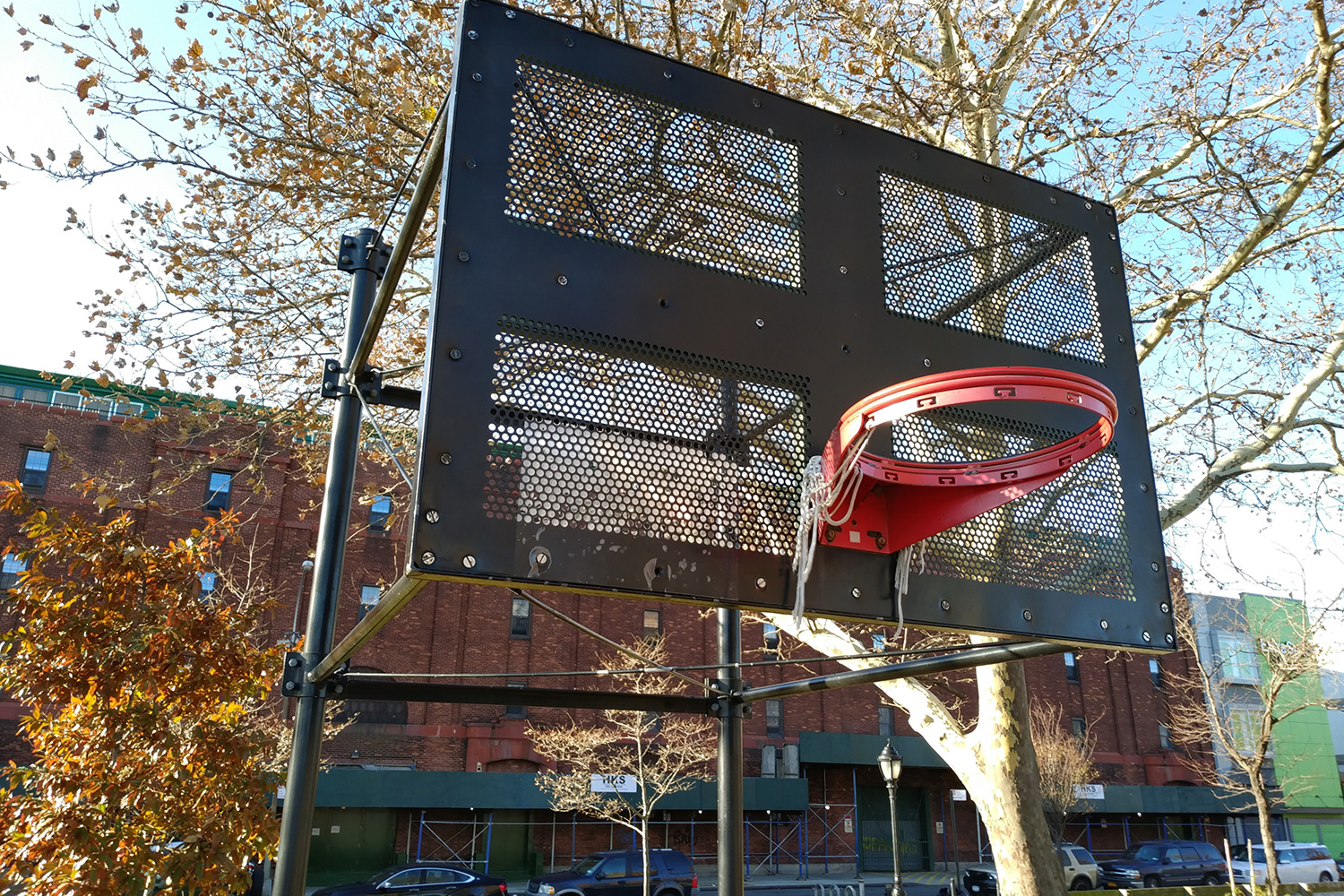“The Axon M is intriguing and unique, but that doesn’t mean you should buy it.”
- Can use two full-screen apps at the same time
- Good build quality
- Simple software experience
- Battery depletes fast with two screens on
- Performance can be sluggish with dual screens
- Occasionally buggy
- Unattractive design
We’ve seen a slew excellent smartphones this year. Phones like the Google Pixel 2, the iPhone X, and the Galaxy Note 8 all offer up great cameras, stunning performance, and refined design. Yet they’re not radically different from their predecessors, even if they adopt the trendy “bezel-less” design. There’s only one smartphone this year that will make you do a double-take – the ZTE Axon M.
The Axon M is a smartphone with two screens. The idea is nothing new, and dates back to the early years of the smartphone, but ZTE’s approach is the most refined to date, and it offers a glimpse at the usefulness of two screens. It easily stands out in a crowded sea of smartphones, but during our Axon M review, we found too many quirks that hold us back from recommending it.
Chunky, and industrial design
When you hear “foldable phone,” your mind may immediately jump to concepts and patents for flexible OLED screens. The Axon M isn’t that futuristic. Instead, there’s a hinge on the right edge of the phone that connects two 5.2-inch LCD screens. You swing out the second screen to open it with a satisfying click — but when the second screen is not in use, the Axon M looks like a traditional smartphone.
There’s a large camera and flash on the top left, and the left edge houses the volume rocker, a power button that doubles as a fingerprint sensor, and another button called TV Mode, which we’ll dive into later. On the bottom edge of the phone sits the USB Type-C charging port, which is flanked by a bottom-firing speaker. You’ll thankfully find a headphone jack on the top.
The edge of the second screen is slightly indented, offering better grip when you want to swing it open. There’s nothing else on the second display, except for the excessive amount of unused space surrounding the screen. This is true for the main screen, as well, and the Axon M packs some of the biggest bezels out there. It makes the phone look dated, and the screen feel small.
Flip the open phone around, and the rear of both screens looks rather industrial — it’s a dull and boring design. There’s an AT&T logo and the Axon M branding, but that’s it.
The rear of both screens looks rather industrial.
When the second screen is not in use, the phone is extremely thick (12.19mm), and it doesn’t feel comfortable to hold. The left edge feels sharp, and the fat hinge on the right makes the phone feel even thicker than it is. Open the Axon M up, and things get a little better. It’s easier to hold with both screens open — kind of like holding a tablet — though any interaction will require two hands.
You will undoubtedly use this phone in single-screen mode most of the time, like a normal smartphone. Our biggest complaint here is the fingerprint sensor. It’s placed in a reasonable position, and it’s indented enough to quickly find, but we found it unreliable. It almost always takes us a few tries to unlock the phone, likely because there’s not much surface area for the sensor to scan a finger. We reset our fingerprint data, and while we saw slight improvement, the rejections largely occur when we’re on the go and trying to get into the phone quickly. Which, of course, makes failure a huge frustration.
The TV Mode button sits underneath the power button, and you need to press and hold it to launch apps in single- or dual-screen mode. It’s meant to be used to open AT&T’s DirecTV Now service, YouTube, Netflix, or other video-centric apps, but you can add any other app you want in the phone’s Settings. It’s not fast, though, as it always shows a preview screen titled “Launching TV Mode,” regardless of what app you’re opening with the button. We tended to avoid it altogether, but it’s another way to jump into your favorite video-streaming app.
The phone supports Dolby Atmos technology, and the earpiece and bottom-firing speakers work in conjunction to provide stereo sound. It gets loud, and it sounds surprisingly good, but as with all bottom-firing speakers, it’s easy to block the audio with your hands.
Double the screen, double the fun
Both screens are 5.2-inches, with 1,920 x 1,080 resolution. They’ll satisfy most people, but the Axon M’s screens aren’t as good as the competition, largely because they’re too dim. We found phones like the Huawei Mate 10 Pro and the Samsung Galaxy S8 far brighter, and the screens were better in every way. The Axon M’s screens’ colors are muted, and blacks aren’t inky, as with OLED screens. The chunky bezels don’t help.
The spotlight, though, is what you can do with two screens. You can use the Axon M four different ways, and an “M” logo on the Android navigation bar lets you switch between these modes. As we mentioned earlier, the primary mode is single-screen, like a normal smartphone.
When it’s unfolded, the second screen will light up, and you can tap on the M logo to swap modes. It defaults to dual mode, which lets you use both screens for separate functions. Open Twitter on the left screen and Gmail on the right, for example — it’s super-handy for multitasking.
Or you can mirror the primary screen. If you fold back the phone halfway to create a kickstand in this mode, the second screen will stay on. This works best if you want to share content with someone else. For example, if you’re sitting across from someone and want to watch a movie with them, or if you want to play a game, like chess or battleships, with a friend.
The final mode lets you stretch the primary screen to the second screen, so you can utilize both screens as one giant 6.8-inch display. Open an app like Chrome, and it will stretch to fit both screens (with a divider in the middle). The divider is distracting when watching shows or movies, and text can get cut off in apps, making things hard to read in this mode. The best use we found for this mode was to watch YouTube and scroll through the comments at the same time, by holding the phone in landscape mode.
We didn’t like watching shows or movies in the full-screen mode. Due to the aspect ratio, YouTube and Netflix added huge black bars to the top and bottom of the content, which looks worse when coupled with the Axon M’s huge bezels. You can have Netflix crop the media to fully fit the screen, but the video looks pixelated, and you miss the action because it essentially zooms in on the video to fit the screen.
We also hardly used the mirror mode, because there simply weren’t many reasons or opportunities to share the contents of the primary screen to the second one. We played a game of chess with a friend in this mode, and didn’t seem to have any problems. It worked well. But we can’t imagine wanting to do this outside of our review.
We were happy to switch back to a normal, single-screen smartphone.
Dual mode is our favorite. We didn’t find the need to use it much, but it was useful when we did. On a phone call, we put the phone on speaker phone, and opened Google Chrome on the second screen to reference an article; we’ve used it to message someone at work through Slack and tweet at an event at the same time; but our favorite was watching a movie on Netflix while messaging someone on the other screen. Getting into this mode could be faster, but it’s the biggest draw for us.
Switching through modes can be slow and unreliable. Sometimes the screen wouldn’t turn on; in single-screen mode, we had apps suddenly open on the screen on the rear, forcing us to flip the phone — only to find it switched back to the main screen. The Axon M feel like a smartphone still in beta.
If it were fast and fluid, we may use the different modes a little more in our day-to-day life, but it’s hard to tell. There were only a few handful moments where we found these modes genuinely useful, but we were happy to switch back to a normal, single-screen smartphone.
Solid performance, Android 7.1.2 Nougat
The Axon M is powered by last year’s Qualcomm processor, the Snapdragon 821, with 4GB of RAM. Considering the price of this phone, it’s a little odd we don’t see the more powerful Snapdragon 835 — the chipset that powers phones like the Galaxy S8 and the LG V30.
Performance was solid in single-screen mode. Apps opened quickly, and games like Transformers: Forged to Fight ran without a hitch. We started seeing problems after opening the second screen. Performance slowed, and we saw more frequent stutters and glitches. Apps didn’t open as quickly, and the software experience just felt sluggish.
Here are our benchmark results:
- AnTuTu: 141,365
- Geekbench 4 CPU: 1,726 single-core; 4,283 multi-core
- 3DMark Sling Shot Extreme: 2,630
The scores are decent compared to competitors using a superior processor, but they are still slightly behind. The Galaxy Note 8 scored 167,946 on AnTuTu, and the LG V30 scored 171,669, but the Axon M beat out the Pixel 2 XL’s 111,112 score. This is another reason to take benchmark results with a grain of salt, though, because the Pixel 2 XL feels more fluid than the Axon M.
For the most part, the Axon M will more than satisfy in the single-screen mode. It will do the job when you open the second screen, the experience can be sluggish at times.
The Axon M comes with 64GB of internal storage and a MicroSD card slot, in case you want to add more space. Like the Huawei Mate 10 Pro, the Axon M strangely uses Bluetooth 4.2 instead of the newer Bluetooth 5 standard, which offers improved range and data transfer speeds.
In another odd move, the Axon M doesn’t run the latest version of Android. It runs Android 7.1.2 Nougat with ZTE’s MiFavor Android theme. The software is very close to stock Android, which is great, but you’ll find an obscene amount of bloatware installed — largely because AT&T is the only carrier selling this phone, and it bundles a lot of AT&T services like DirecTV Now. You can’t uninstall these apps.
We like the simplistic software here, and ZTE told Digital Trends the Axon M will eventually get the more recent Android 8.0 Oreo release, though no timeline was shared.
Average camera
There’s only one camera on the Axon M. It’s on the primary screen on the front, but it’s not your average selfie cam. It’s a 20-megapixel camera with an f/1.8 aperture, and it’s intended to act as both the selfie and rear camera.
When you open the camera app, you’ll have to flip the phone to the second screen to shoot what’s in front of you. Tap the switch camera icon, then turn the phone around to use the camera for selfies. It’s a little jarring at first, but it’s a smart way to eliminate the need for another camera on the second screen. Switching back and forth can be annoying, though, especially when you’re quickly trying to snap a photo.
The Axon M feels like a smartphone still in beta.
The camera’s quality was average. In bright daylight there’s good detail, but poor dynamic range, which leads to overexposed or underexposed photos. In general, our photos tended to look a little washed out, though color accuracy was solid. We should note there’s very little shutter lag, and the camera captured photos quickly when we wanted it to.
There’s no optical image stabilization (OIS), so you’ll need steady hands in low-light environments. You must stay very still to ensure the photo isn’t blurry — chances are it still will be — and there’s a lot of grain. You can easily take far better photos on flagship smartphones in this price range like the Galaxy Note 8, and the Google Pixel 2.
Day-long battery
Packed in this chunky phone is a 3,180mAh battery. On average, it got us through a standard workday without fuss. We took the Axon M off the charger around 8 a.m., and with medium to heavy use involving browsing social media, the web, watching videos, and streaming music, the phone went down to a little under 30 percent around 6 p.m.
That, however, is with just a single screen. Introduce the second screen into your daily use, and the battery drops fast. We used the second screen for Chrome while on a call, and saw the battery lose 20 percent within 20 minutes. You’ll need a charger or a battery pack if you want to keep using both screens while on the go.
Luckily, it does charge quickly, thanks to support for Qualcomm’s Quick Charge 3.0. We went from 15 percent to 65 percent in about 40 minutes.
Price, availability, and warranty
The ZTE Axon M is only available through AT&T, and you can purchase it from the carrier for $725 (requires qualified service), or pay $24.17 a month for 30 months with your AT&T bill. It’s available now.
The device comes with a limited warranty that protects against manufacturing defects up to two years from the date of purchase.
Our Take
The Axon M is unique, but ZTE needs to go back to the drawing board to further refine this dual-screen smartphone. It’s far too expensive for what it offers, and the dual-screen experience still feels like a beta.
Is there a better alternative?
An alternative smartphone is easy to find at this price. The Google Pixel 2 costs $650, has a great camera, day-long battery life, and smooth, simple software. The same can be said for the Galaxy Note 8, and the iPhone X.
Is there a better dual-screen smartphone? No — there just aren’t many others out there. Still, we’d rather opt for a single-screen smartphone.
How long will it last?
Both screens are protected with Gorilla Glass 5, but we’re worried the second screen will suffer from scratches after prolonged use. We’ve already seen a few on our unit. There’s also no way to put a case on this phone. If you drop this device, you have a very high chance of cracking both screens. To top it off, most smartphones in the Axon M’s price range feature IP67 water-resistance, but ZTE’s phone has none, adding another reason to clutch this phone dearly.
The Axon M will likely get Android 8.0 Oreo next year, but we can’t say for certain it will see many updates after that. The Axon 7 from 2016 has yet to receive Oreo.
Should you buy it?
No. Unless you’re head over heels for the dual-screen idea, there’s no reason to spend more than $700 on the Axon M – and even then, we urge caution.
















